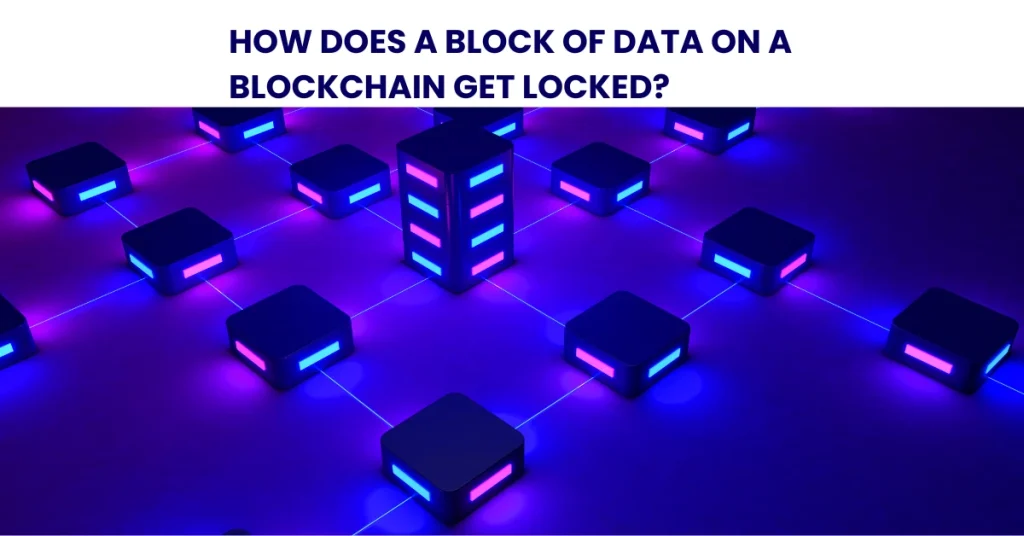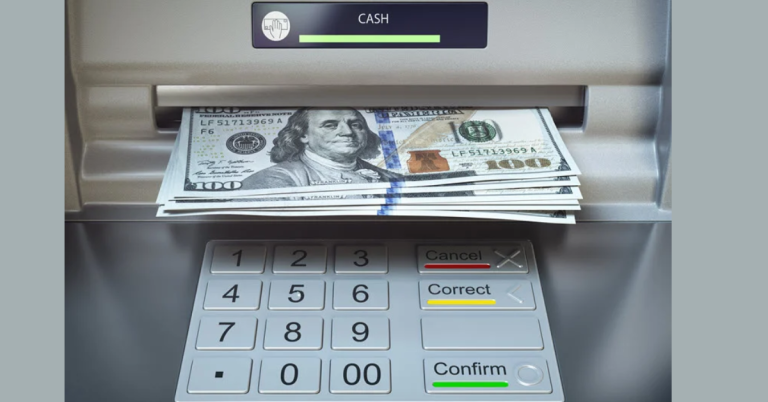How a Block Gets Locked in Blockchain: Explained Simply

How a block gets locked in blockchain is a crucial question central to data security and transparency in today’s digital age, where blockchain technology is a true game changer. Blockchain is a decentralized ledger system where how a block gets locked in blockchain ensures secure storage of data across connected blocks containing transactions or records. These blocks are connected in a chain in chronological order that is virtually immutable. But understanding how a block gets locked in blockchain explains how each block is securely locked to prevent changes to its data.
The real power of blockchain lies in how a block gets locked in blockchain using cryptographic techniques and consensus to securely seal validated blocks. Such locked blocks, however, not only safeguard data integrity but also bring trust across multiple industries such as finance, healthcare, and logistics.
In this article, we will clarify the meaning of block, Blockchain, elements of data blocks, their purpose and the intriguing mechanics that lock each block on the chain with finality and integrity. So, let’s get started!
What is Blockchain, and How a Block Gets Locked in Blockchain?

To understand how a block gets locked in blockchain, we first recognize a block as a secure unit storing transactions or data. A block is a secure digital file, and how a block gets locked in blockchain ensures this file remains unchanged and trustworthy. Each block contains transactions, timestamps, and references to previous hashes—all key to how a block gets locked in blockchain, which includes those in the previous block.
This process is what forms an unbroken and unbreakable chain of blocks, or what we call a blockchain. The amount of time it takes for a block to be created is called block time, and it can differ depending on the blockchain network. Bitcoin’s average time between blocks is 10 minutes, while Ethereum completes one about every 15 seconds. This block time is a critical aspect of the speed of transaction processing and how secure the blockchain is.
What is Blockchain—Explained
Blockchain is an open, decentralized ledger that records everything in a transparent, secure, and tamper-resistant way. Rather than keeping data in one centralized place, blockchain disperses information across a network of computers, meaning no single party has a total say. Each block in the chain includes several transactions and has a unique hash to the last block in the chain, making it an irreversible and sequential chain.
It is this architecture that makes blockchain very secure and reliable. After the information is recorded in a block and added to the chain, it becomes nearly impossible to change it without changing all subsequent blocks. For many applications — finance, healthcare, supply chain, and others— the idea of transparency, integrity of data, and non-dependence on any single third party is a powerful solution that blockchain provides.
Important Elements Related To A Block
Understanding how a block gets locked in blockchain requires knowing the key components that make each block secure and functional. Here is a simple version of each:
- Hash: Hashing is a fundamental part of how a block gets locked in blockchain, creating a unique digital fingerprint for every block. It’s a digital fingerprint for a block of content. If any information in the block is altered, the hash will change as well, which can help secure and detect tampering in the blockchain network.
- Transaction Data: Transaction data plays a vital role in how a block gets locked in blockchain, providing transparent and verifiable records.It is an open, transparent, and verified history of everything that took place in that block, making each transaction trackable and written on the blockchain.
- Nonce: A nonce (which stands for “number only used once”) is a random value that blockchain miners search for. It is written into a block’s data and must match certain difficulty criteria when hashed. Finding the right nonce is a crucial part of how a block gets locked in blockchain, allowing the block to be securely added.
- Previous Block Hash: It is the hash of the previous block, which connects the blocks in a blockchain. It maintains the time order and chain coherence. If the data in any block is modified, the hash is modified, and the chain is broken, revealing tampering, leaving strong security of the chain as a whole.
How Does a Block of Data on a Blockchain Get Locked?

With the knowledge about how a blockchain is built now established, let’s explore how a block of data is immutably fastened—” locked”—onto the chain. The mechanism of how a block gets locked in blockchain is why blockchain is secure and immutable. The following are the main steps that describe how a new block is added and confirmed:
1. Transaction Generation & Verification:
Before there can be a block, there are presumably transactions and some proofing of those transactions:
- Creating a Transaction: A transaction starts when a user sends data or, in blockchain terms, transfers assets, including cryptocurrency or ownership information. This transaction contains important data such as the sender and receiver addresses, as well as the amount of coins being transferred.
- Using Cryptography: All trades are cryptographically signed to secure them. At its core, the system is based on public and private key pairs — the public key is as visible as an email address, and the private key is as concealed as a password.
- Transaction Verification: The blockchain network verifies that the transaction is true. This involves validating that the sender has enough funds and that the transaction fulfils the network’s rules.
- Broadcasting the Transaction: Once validated, the transaction is broadcast to all of the nodes or participants in the blockchain. This guarantees full transparency, as every node has access to the record of transactions, thereby building stake and trust.
2. Block Creation & Hashing:

Once the transactions are validated, they are found in the respective block by miners or validators:
- Grouping Transactions: Transactions that are confirmed are added to the block and attached to the blockchain. The number of transactions included can vary, and miners typically select transactions with higher available fees.
- Generating the Hash: The data from each block of the transaction is run through a cryptographic function to create a unique string (which is the hash). This hash is similar to that of a fingerprint and is unique only to a particular block.
- The Role of the Nonce: In proof of work (PoW) systems, miners compete to discover a certain value, the nonce. This nonce, when added with data in the block, must generate a hash that meets the stringent requirements that it starts with a certain number of zeros. It is this step which is expensive and constitutes an inherent security feature.
3. Proof of work and Proof of stake:
Blockchains rely on what’s called a consensus mechanism to make sure everyone agrees on which blocks are valid before they’re added:
- Proof of Work (PoW) is one method explaining how a block gets locked in blockchain through mining and a mathematical challenge. The first to crack the code gets to add the block and receive a reward. Despite its heavy security, PoW uses a significant amount of electricity and computation.
- Proof of Stake (PoS): Rather than competing to validate, PoS chooses validators based on the number of coins that they’ve committed to the network. This approach is more energy efficient and requires less costly hardware.
4. Verification & Acceptance of Blocks by the Network:
Once a block has been proposed (asynchronously by PoS, or synchronously via PoW), the block needs to be agreed upon by the entire network:
- Transaction Review: Every node reviews transactions as part of verifying how a block gets locked in blockchain and confirming block validity.
- Hash Check: Nodes locally recompute the hash of the block and verify that it matches the provided one. Any mismatch would indicate tampering or corruption of the data.
- Chain Link Validation: Nodes also check that the new block refers correctly back to the hash of the previous block. This keeps the chain connected together and functioning as a single unit.
5. Adding the Block to the Blockchain:
When the block is approved by the surrounding nodes, the block is added to the chain for real:
- Updating the Blockchain: Each node of the network updates its copy of the blockchain by adding the newly verified block at the end of the chain.
- Achieving Immutability: Because of how a block gets locked in blockchain, altering one block requires changing all subsequent blocks, making tampering nearly impossible. This basically makes unauthorized changes effectively impossible which ensures the long-term integrity of the blockchain.
Wrapping Up
In short, how a block gets locked in blockchain is a blend of cryptography, consensus, and verifiability, ensuring security. From transaction generation to ultimate validation, every stage is critical to the security, immutability, and trustworthiness of the data itself. This is the mechanism that makes blockchain technology so disruptive in industries like finance and supply chain. Also, when you understand how a block becomes locked, you get a better understanding of the capability and potential of decentralized systems. As blockchain progresses, its immutable data structure will continue to serve as a foundation for digital innovation.
Read More:
FAQs—How Does a Block of Data on a Blockchain Get Locked?
1. What does it mean to “lock” a block on the blockchain?
Locking a block is the process of asserting and securing a block’s contents so that they cannot be changed. This is done with cryptographic hashing, like Proof of Work/Proof of Stake/Validation by nodes on the network.
2. Who locks a block on the blockchain?
Locking a block up is the duty of miners for Proof of Work or validators for Proof of Stake. They combine, encrypt, and validate transactions, and then they disseminate the block for the network to accept.
3. What is the role of hashing in closing a block?
When a data block is hashed, a unique fixed-size string known as a string will be converted out. Make even the smallest modification to the data and you get a completely different hash, so tampering is easy to see. It locks down the block and will connect it to the preceding block.










